We have much more to do and your continued support is needed now more than ever.
We’re Not Mountain Lion About These Facts
NWF’s California Director is writing a book on wildlife and to help her out we asked our Facebook community what they would like to know about mountain lions. We received fantastic questions and decided everyone should have access to the answers. Go ahead and prowl through these cool mountain lion facts!
1. Mountain lions, pumas, and cougars are all the same species.
As it turns out, mountain lions, panthers, pumas and cougars are all the same species: Puma concolor. They have a lot of names. In fact, they are listed in dictionaries under more names than any other animal in the world! My favorite is ‘ghost cat‘.
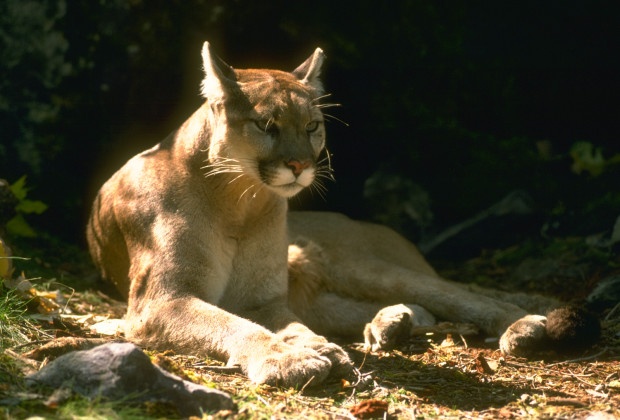
2. Only one sub-species is listed as endangered in the United States.
Historically, mountain lions roamed most of the United States. Today, the species is nearly extinct in eastern states, except for the endangered Florida panther (Puma concolor coryi). There are fewer than 100 Florida panthers left in the wild. Most western states consider mountain lion populations sustainable enough to allow managed sport hunting (except California). Authority for setting and carrying out hunting programs is held by each state’s wildlife management agency.
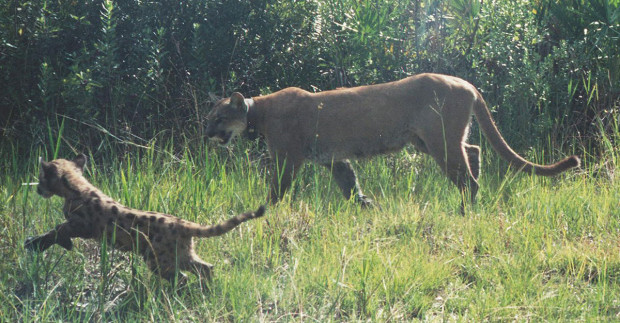
3. Mountain lions can live in nearly any type of American ecosystem.
These wild cats can live in deserts, snowy mountains or backyards. Mountain lions try to avoid people, but development has made urban encounters more common, like this cyclist in Los Angeles and this backyard habitat in Los Alamos. Here are a few tips for homeowners in areas where mountain lions range to create safe & wildlife-friendly yards to facilitate a peaceful coexistence.

3. They can jump 15 feet high and 40 feet in distance.
Oh, and they can also sprint up to 50 miles per hour. Their hind legs are the largest (proportionately) in the cat family and their paws are irresistibly huge & adorable. These characteristics give them impressive jumping and sprinting abilities.

4. They are well-adapted for the quick capture and kill of prey.
The agility, vision and adaptability of mountain lions make them fantastic hunters. As ambush hunters, they stalk prey silently and wait for it to move within about 50 feet. Then they attack. The claws of mountain lions help grip prey, while their jaw muscles deliver a powerful strike to the neck. Mountain lions have teeth designed to cut through meat and tendons. Zombies wouldn’t even stand a chance against these predators.
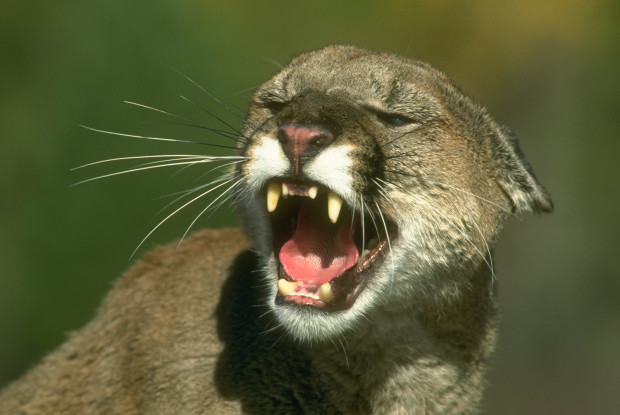
5. Mountain lions are not always the apex predator.
Although they are nearly perfect predators, mountain lions may yield to species like the gray wolf, black bear and grizzly bear depending on their location. They are fast sprinters, but not built for endurance. When they are trying to outrun danger, mountain lions may climb a tree to catch their breath and recover.
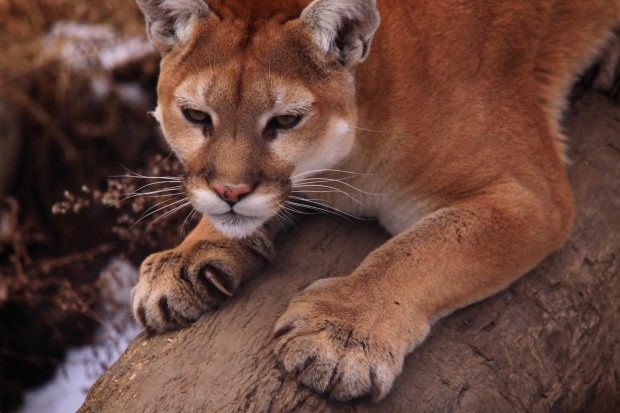
6. They prefer wild game over domestic animals.
Mountain lions are carnivores and rarely eat vegetation. They seem to prefer deer in much of their U.S. range, but as opportunistic hunters, mountain lions will also go for moose, bighorn sheep or even smaller prey. Mountain lions play a crucial role in managing deer populations, and don’t pose a risk to prey populations in their range. When both wild game and domestic animals are accessible and available, research suggests that they prefer wild prey.

7. Mountain lions are solitary and avoid humans.
Their nature is to avoid humans. However, if you DO encounter a mountain lion, here’s what to do:
- Don’t run away. Remember how fast they run? Bad idea.
- Give it a way out. It wants to avoid you. Allow it a path to get away.
- Slowly back away.
- Make yourself big and loud. Put your hands up and talk in a loud voice.
8. Baby mountain lions have spots and blue eyes.
They eventually grow out of their spots and blue eyes.
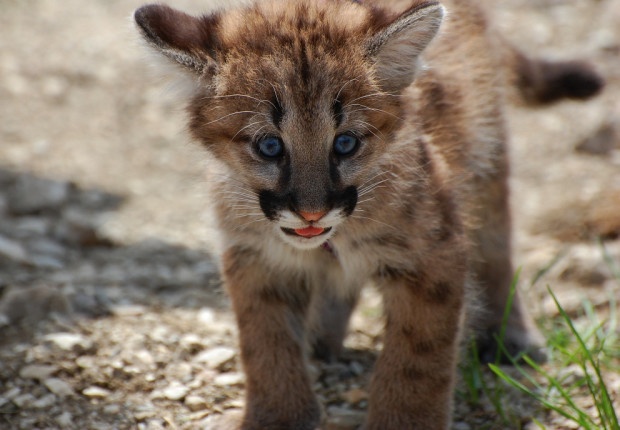
9. We can all help protect mountain lions.
Many local mountain lion populations are decreasing, primarily due to habitat loss and uncontrolled hunting. The Florida panther, specifically, is listed as endangered. Currently, there are fewer than 100 Florida panthers left in the wild. You can symbolically adopt a mountain lion, or the Florida panther subspecies and help NWF protect and recover the wild places that sustain wildlife. Additionally, homeowners in areas where mountain lions range can create safe & wildlife-friendly yards.
Help mountain lions and other wildlife who make their home in the Santa Monica Mountains—urge the U.S. Department of Transportation to support the creation of a wildlife crossing at Liberty Canyon.
Symbolically adopt a mountain lion today to help support our work to protect them and other wildlife.
Thanks to researcher Michael Drake, NWF Naturalist David Mizejewski and NWF Senior Wildlife Biologist Doug Inkley for helping with this post.





















